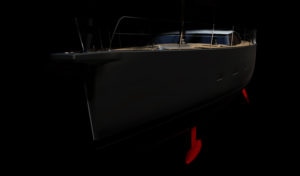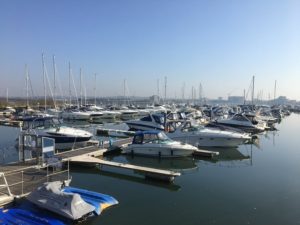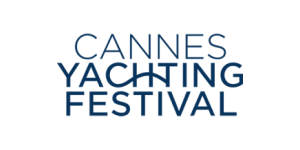Data, foils and pressure: Alex Thomson speaks out ahead of Vendée Globe

“I came 3rd, I came 2nd, how can you add any more pressure?” Alex Thomson asks of the upcoming Vendée Globe, starting Sunday (8Nov20). “The whole programme has been designed to be the best, be number one, be successful.”
But he’s ready, he says, and looking forward to seeing quite how far the team’s plan to integrate man and machine has worked. The boat has 350 sensors on board ‘and lots of alarms’, linked to cockpit displays which he says will give him the right information to make the right choices.
“The boat is sailed on data. It’s cutting edge technology. The performance jump this time is even bigger than the previous jump with foils.
“I was sceptical it was possible, but it’s been an amazing project with amazing progress.
“The pilot system is fundamentally B&G, controlled by a black box. I have a machine learning system, to generally predict two seconds ahead. It can predict the heel angle two seconds ahead and integrate that into the system,” which means Thomson will be able to react faster, and drive his boat faster, although he’s wary of the boat’s, and his, limits.
“We measure loads with fibre optics and see strain levels within them. It’s clear when I’m at my limit and I have to calm it down.”
There are also nine cameras on board.
“I find it quite motivating being watched,” Thomson says. “And the race is an opportunity to deliver more content and make it more interesting.
“As comms get better, people will watch more. The race is growing more and more suited to the digital world.” This means he can fulfil his role as an ambassador for his partners and for the sport.
“The Vendée Globe organisation could do a lot better job of spreading the word across the world,” Thomson says. “If they won’t do it, we will.”
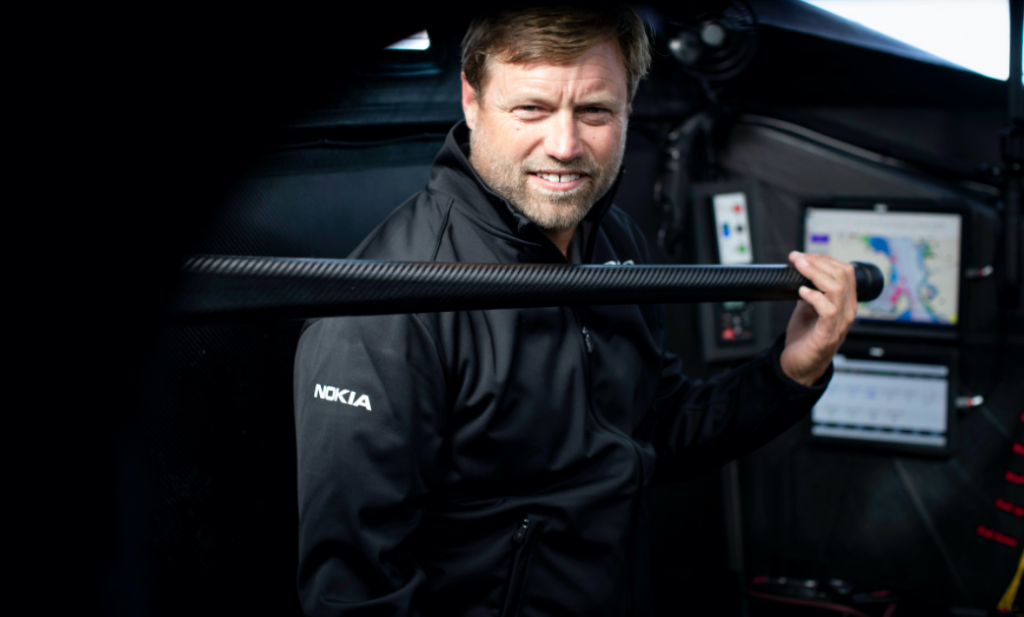
With the race village closed due to Covid-19, Thomson says that he’s sorry race fans won’t be at the start: “but I will be less emotional and it’ll be easier for me to start.”
The past year’s pandemic has obviously taken its toll on all teams.
“It’s been very complicated,” Thomson says. “The boats and teams lost miles, which affects the way we approach the race.
“We have 20,000 miles on the clock – exactly the same as previous boat last time round.”
Five or six thousand of those miles have been sailed on Thomson’s newest foils.
“Our version two foils were installed in August. We would have loved them earlier but the covid situation means we couldn’t [have them].”
The version two foils are a little thicker than version one, but are fundamentally a development – as per the original two-step plan – and not a redesign.
“The race is predominantly downwind,” Thomson says, “so that’s where we’ve put our energy. The foils are 25% bigger than the last ones, they’re amazing kit, an amazing piece of engineering. They’ve been ultra-sounded within an inch of their life.”
Thomson says his last Vendée Globe, in which he lost a foil early on, has helped to hone the team’s process.
“Sailing round the world on one wing was a very powerful experience,” he says. “I have load limits, and I don’t intend to go over them.”
His version two foils are retractable, which is something he’s very happy about.
“Reverse loading is definitely in our minds,” he says. “Big foils that can’t be retracted have the ability to reverse load – to suck down instead of lifting. I’m very glad my foils can come in my boat when I need them to.
“I’m certainly concerned,” he says of those who can’t retract. “New boats with enormous foils are a different breed. We’re reaching the limit of what people know. There may be a war of attrition – none of the teams have sailed as much as they’d like. Some boats are very new. How can someone prepare a boat in that timescale?”
That said, Thomson already knows a fair bit about his competitors’ performance.
“There are boats we’ve raced before and we understand their performance,” he says. “And marine traffic is a very useful tool for spying. We’re sure they watch us, as we watch them, to build a picture of how boats perform.
“Any of the new boats look interesting. Any could go out there and win the race.”
Thomson is hotly tipped to win this year’s race.
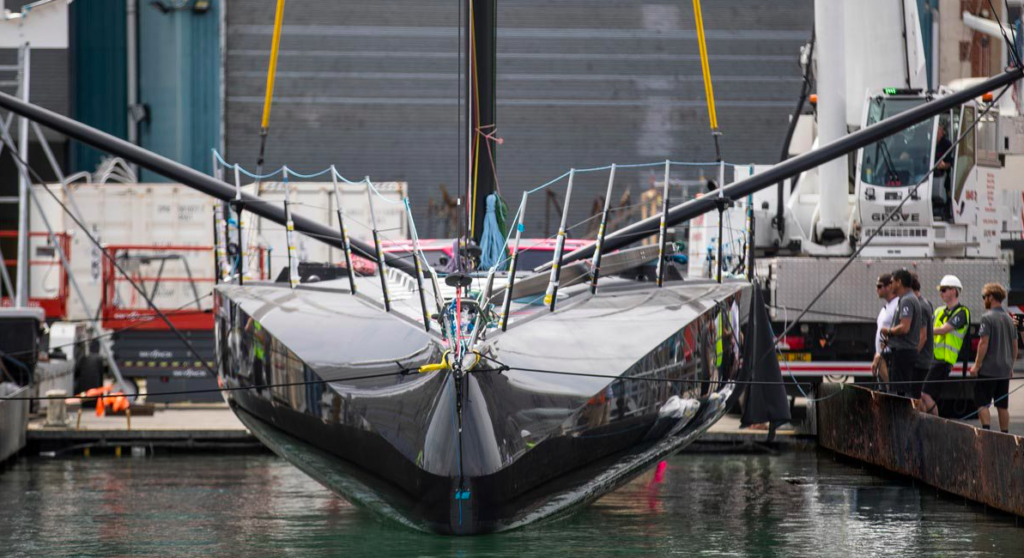
“We feel we have an edge downwind, but nothing’s free. I imagine we’ll have a deficit closer to wind,” he says.
Designed by Richard Bouzaid from Doyle Sails, Thomson cites his sails as ‘unbeatable’ for downwind and says he can’t understand why no one else uses them. Yet, he’s glad the performance knowledge remains between him and American Magic (the America’s Cup challenger).
But the team has looked to competitors’ knowledge about past failures.
“We’ve looked at our history of breakages, and everyone else’s history, and built a matrix of what things are most likely to go wrong,” he says.
“Our knowledge, attention to detail and contingency planning are all ten-fold.
“We can only compare to what we’ve done before, we’re better prepared than we’ve ever been.”
The race is due to start on Sunday. It’s Thomson’s fifth time competing, and he’s supported by Hugo Boss again.
“Hugo Boss [sponsors] is pretty amazing. They put an enormous amount of trust in our team.
“Our sport should take faith in this. Hugo Boss benchmarks us against other sports.
“This sport has to stack up numbers wise and it has done time and time again. We have to provide value back and perform on the water and in the boardroom.”
Thomson says he’s been ‘completely captivated’ by the Vendée Globe. He’s one of the lucky ones who’ve found a career within their passion. And whatever the pressures of the contest, Thomson admits that competition is the perfect fit for his character.
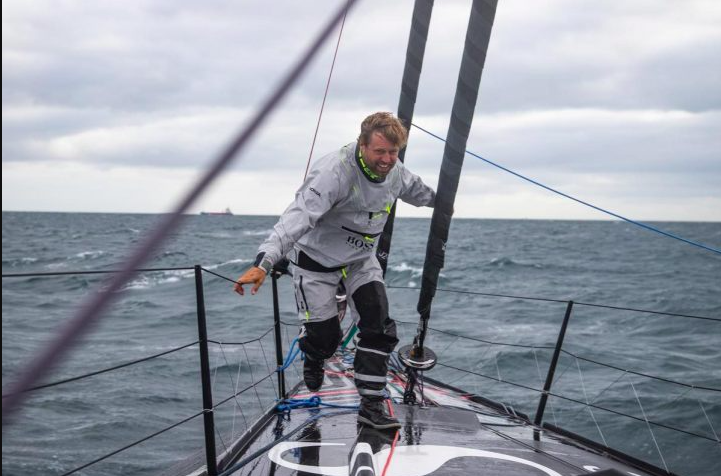
Join Thomson on a tour of Hugo Boss:
Join Thomson for a quick sail:

